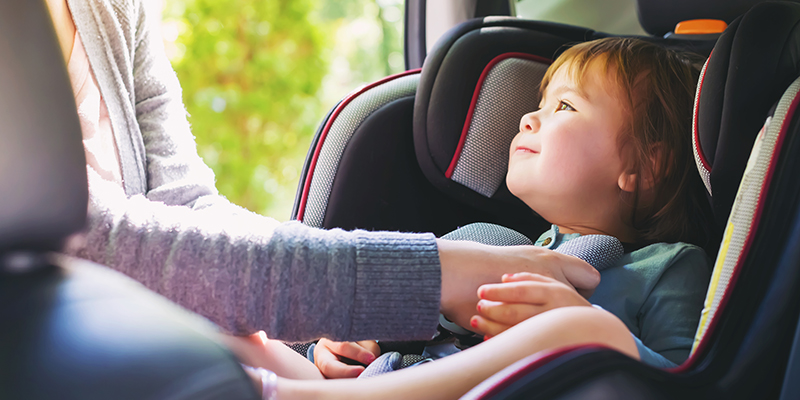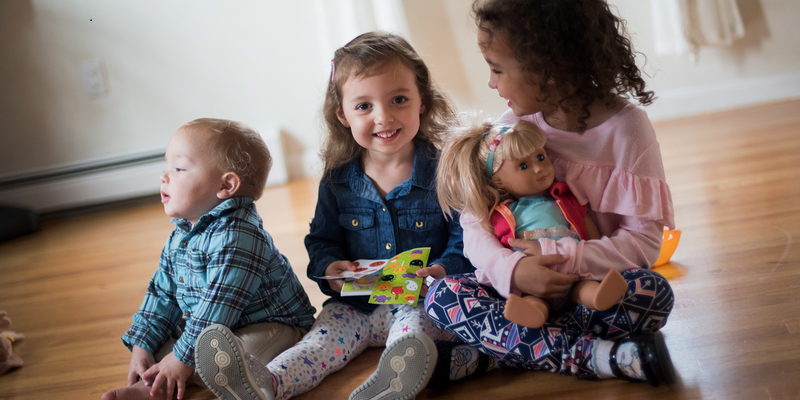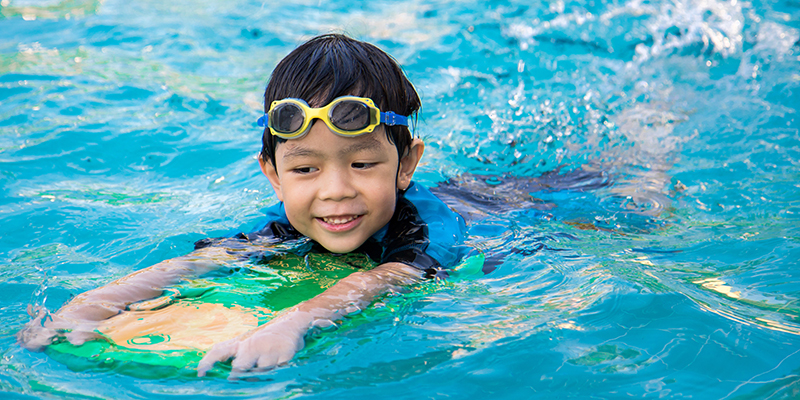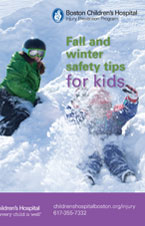Patient Resources | Overview
Car seat safety
Proper restraints for children riding in motor vehicles depend on the child's age and size. When properly installed, the risk of death in a motor vehicle accident is reduced by 71 percent. The key to keeping your child safe is to use an appropriate child restraint that's properly installed and properly used.
Family education materials:
- Car Safety Family Education Sheet
- Hoja de educación familiar sobre seguridad en el automóvil (versión en español)

Home safety
Windows
When the weather gets warm, it’s tempting to open windows to let in fresh air. To keep kids safe around open windows and prevent serious falls, use window guards on all windows above the first floor. Screens are not strong enough to stop a child from falling through a window.
Keep windows locked when they are closed. Set rules with your child about not playing near windows.
Keep furniture away from windows so children can’t climb up. Open windows from the top, leaving the bottom closed, when possible. A window open just five inches can be dangerous for children under the age of 10.
Poisoning
Poisoning is the fifth-leading cause of children's death from unintentional injuries in the home. Medications and household cleaning products should always be placed in a locked area that is out of your child's reach. Medications that are old, outdated or no longer being used should be disposed of properly.
For more information go to the Massachusetts and Rhode Island's Poison Control Center's website.
Family education materials:
- Poison Safety Family Education Sheet
- Hoja de Educación Familiar sobre Seguridad con Envenenamientos (versión en español)

Recreation safety
Playing outdoors is a great way for children to get exercise, but it’s important for adults to keep a close eye on children on playgrounds and during other outdoor activities to make sure they stay safe. Here are a few tips:
- Make sure an adult is always watching.
- Visit playgrounds built on a soft surface, like rubber, bark chips or sand.
- Dress children in safe play clothes.
- Avoid scarves, hood draw-strings and necklaces that can get caught on play equipment.
Playgrounds
Playing outdoors is a great way for children to get exercise, but it’s important for adults to keep a close eye on children at playgrounds to make sure they stay safe. »»Children should NEVER push or roughhouse while on jungle gyms, slides, seesaws, swings or other equipment.
- Use equipment properly—slide feet first, don’t climb outside guardrails and don’t stand on swings.
- Remove all drawstrings from children’s clothing before they enter the playground. Other loose objects, like necklaces, should also be removed.
- There should be only one child at a time on a playground device designed for solo use. More than one child highly increases the risk of injury.
Sun
Sunburns happen, even on cloudy days. If you are going to be outdoors for more than a half-hour, use sunscreen, sunglasses, hats and long sleeves. Long sleeves and pants also protect against sunburns and insect bites.
If your child complains about dizziness, headache, nausea or muscle cramps, he or she could be overheated or at risk for heat-related illness. Help your child lie down in a cool, shaded area with feet raised. Give the child water to drink, and use a cool cloth if available.

If you'd like more information about spring and summer safety tips, download a print version of our brochure.
Boston Children's Hospital Fall and Winter Safety Guide PDF
Holidays are a great time to celebrate, but did you know childhood injury rates spike during holidays? Avoid a trip to the hospital during your holidays by following these tips.
Water
To keep kids safe around pools, lakes, the ocean, wading pools, kiddie pools, bathtubs, buckets, toilets and hot tubs, always keep kids in your direct line of sight. Be focused and alert. Reading, listening to music or having long talks with other people can limit your ability to pay attention.
A pool should have a fence with a gate that locks. The fence needs to be at least four feet high and should surround all four sides of the pool.
When boating, both you and your child should wear a life vest at all times. A child can drown in as little as one inch of water. Even if your child knows how to swim, watch them closely anytime they are in — or around — water.
Teach your child to swim. The American Academy of Pediatrics recommends that children begin swimming lessons at 4 years old.
Animals
Dogs and other animals spend more time outside during the spring and summer, too. To avoid animal bites, teach your child these safety tips:
- Always ask the owner if it’s okay to pet the dog.
- Let the dog see and sniff you before petting it.
- Stay calm around the dog and move slowly.
- If a dog you don’t know comes up to you, stay still and look at the ground until it goes away.
- If a dog attacks and knocks you over, roll into a ball and cover your face with your arms.
Bike and pedestrian safety
Biking
Helmets prevent 85 percent of head injuries. Have your child wear a helmet any time they are on wheels — whether it’s a bike, scooter or skateboard. If your child is 16 or younger, it’s the law! A new helmet is more effective than an old one that has been in a crash.
There are different helmets for different activities.
A bike helmet is the best helmet to wear while bicycling because it’s designed to protect the front of the head. In bike falls, it’s common for the rider to fall forward.
A multi-purpose helmet can be worn when skateboarding, roller-skating or riding scooters. When on skates or scooters, falling backwards or to the side is more likely and a multi-sport helmet is designed to better protect the back of the head.
To fit your child’s helmet:
- Put the helmet on your child’s head. Have your child look up; they should see the helmet.
- Front straps go under the chin and make a ‘V’ just under the ears. Rear straps should be flat behind the head.
- Ask your child to open their mouth as wide as possible. Does the helmet hug the head? Tighten straps as needed until the helmet doesn’t move around on the head. One finger should fit between the chin and the chinstrap when your child’s mouth is closed.
If you'd like more information about spring and summer safety tips, download a print version of our brochure.
 Think First/ Boston Children's Hospital brochure PDF
Think First/ Boston Children's Hospital brochure PDF
Each year an estimated 500,000 persons sustain a brain or spinal cord injury and it is the leading cause of death for teens and children. ThinkFirst is a national Injury Prevention Program focusing on the prevention of brain and spinal cord injury in children and teenagers.
Pedestrians
Autumn is back-to-school time for many kids. If your child will be walking or biking to school, or for exercise after class, make sure they know these important safety tips:
- Look left, right and left again before crossing a street. Keep looking as you cross.
- Walk, don’t run, across the street.
- Walk on sidewalks or paths. If there are no sidewalks, walk facing oncoming traffic, as far to the left as possible.
- Parents and children should hold hands while walking in parking lots.

